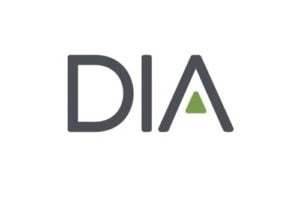A new piece in the January 2023 edition of DIA’s Global Forum magazine lays out how a new coalition aims to transform the landscape for rare disease treatments in Europe and beyond.
The knowledge and infrastructure required to unlock rare disease “white spots,” diseases where there is currently no science or translational capability, call for a different strategic paradigm. The mission of the Rare Disease Moonshot is rooted in boosting public-private collaborations.
Many challenges in modern medicine are too big for one organization to tackle alone. They require true collaboration between a diverse network of companies, policymakers, regulators, academics, civil society groups, and patients. Rare diseases present one such challenge.
Key Takeaways
- There is no treatment for 95 percent of rare diseases, and in many cases, no science to translate into solutions for patients.
- The Rare Disease Moonshot will enhance the translational research ecosystem, optimize clinical trials and regulatory pathways, and boost infrastructures.
- New recommendations on “research needs” in clinical trials, diagnostics, and translational research have been published.
- Public-private partners support calls for a European Action Plan on Rare Diseases.
Conducting clinical trials when patient populations are small, expertise is dispersed, and regulatory pathways are complex can be immensely difficult. When new solutions are developed, working with payers to ensure access to innovative diagnostics and medicines can bring additional challenges arising from limited availability of patient insights or payer knowledge of rare diseases. As a result, these headwinds have given rise to a lack of science and significant unmet need.
Today, despite progress in recent years, the reality is stark, with an estimated 95 percent of the 7,000 identified rare diseases still lacking a cure or treatment. In fact, in the worst cases, for many diseases there is no “science” at all.
This demands a radical new approach. We cannot continue on the current path and expect different results. Today’s medicines development landscape was designed to solve medical problems where we have more patients, more knowledge, and more expertise. It is ill-suited to the challenge of rare diseases.
Part of the problem is that we are in the habit of moving in straight lines with too little involvement of stakeholders from all the relevant sectors. Instead of following familiar patterns, all partners must collaboratively engage with other stakeholders including in public-private partnerships, as the technology moves along the value chain towards access. We should be moving in parallel rather than in series, remaining open to innovative ways of working together.
The Rare Disease Moonshot is a multistakeholder commitment which aims to take public-private partnerships to the next level. It envisions deep and diverse collaboration on the scale witnessed during the COVID-19 pandemic. Together, we can generate new data, develop and/or utilize existing infrastructures, and reimagine the translational research ecosystem.
While the challenge ahead is significant, the past shows that partnerships and smart policy can deliver progress. More than 200 therapies for rare diseases have become available in the past two decades, with new diagnostic tools for several illnesses. While this is just the tip of the iceberg, it shows the meaningful impact that can be achieved through public awareness and industry commitment in tandem with dedicated EU rules on orphan medicines, methodological qualification of new study designs, and adapted regulatory pathways.
In addition, we have seen improvements in data infrastructure, research consortia, and multistakeholder approaches to HTA. The 24 European Reference Networks (ERNs), which bring healthcare specialists and rare diseases investigators together, provide a sound structural foundation for taking the next steps forward.
Most recently, the proposed EU Pharmaceutical Regulation (2023/0131) foresees opportunities for not-for-profit organizations, including patient advocacy groups, to make submissions to the EMA or a Member State competent authority. This would broaden the level of clinical or nonclinical evidence that regulators can consider when assessing a new therapeutic indication that addresses an unmet medical need.
Addressing unmet needs and filling gaps in science requires not only a supportive legislative and policy environment. Progress is driven by stakeholders. Public and private partners in this field are taking proactive steps to effect lasting change through joint initiatives.



